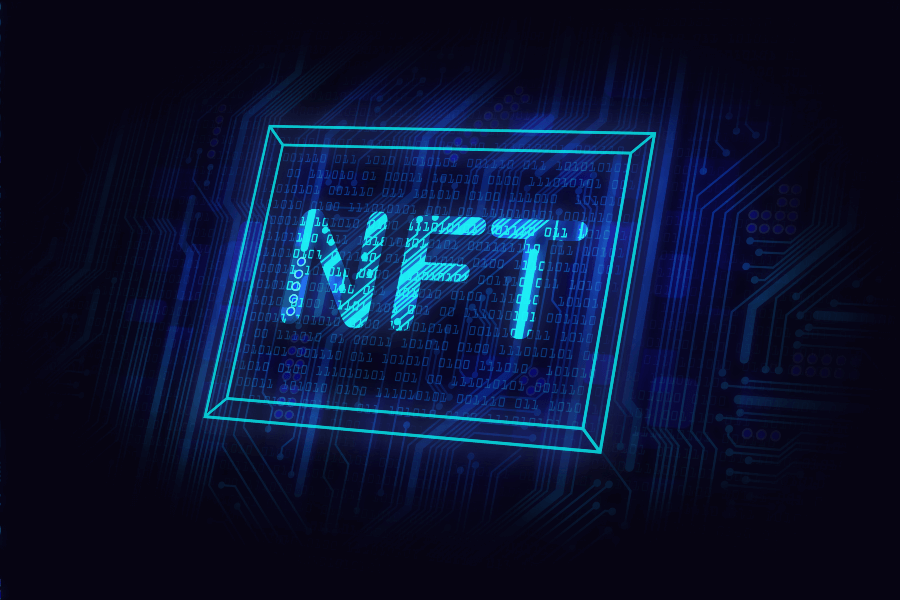David Agullo
What Is Meant By Non-Fungible Assets? Are They Worth to be Purchased? What Is Their Importance?

Cryptocurrencies have soared in popularity in recent years, but these digital assets are more than simply speculative bubbles. Blockchain, the digital ledger technology that enables cryptos, already used in the real world. NFTs (non-fungible tokens) is one example. NFTs are blockchain-based tokens that reflect digital asset ownership.
Non-fungible means that it’s one-of-a-kind and can’t substituted with anything else. A bitcoin, for example, is fungible, meaning you can exchange one for another and get precisely the identical thing. A one-of-a-kind trade card, on the other hand, cannot duplicated. You’d get something altogether different if you swapped it for a different card.
A digital asset that depicts real-world elements like art, music, in-game items, and films is known as an NFT. They’re bought and traded online, often using cryptocurrency, and they’re usually encoded with the same software as many other cryptos. NFTs are also one-of-a-kind, or at the very least one of a very small run and contain unique identifying codes.
The cost of NFT is worth out in millions and it is very beneficial to buy them.
In theory, anyone can tokenize their work and sell it as an NFT, but recent headlines about multi-million-dollar purchases have piqued attention.
-An animated Gif of Nyan Cat, a 2011 meme of a flying pop-tart cat, sold for more than $500,000 on February 19th.
-Grimes sold some of her digital paintings for more than $6 million a few weeks later.
-Twitter’s founder Jack Dorsey has promoted an NFT of the first-ever tweet, with bids hitting $2.5m.
WHAT IS THEIR IMPORTANCE?
-MARKET EFFICIENCY
The transformation of a physical asset to a digital asset accelerates operations and eliminates middlemen. On a blockchain, NFTs represent digital or physical artwork, removing the need for agencies and allowing artists to communicate directly with their consumers. They can also help businesses enhance their processes. An NFT for a wine bottle, for example, will make it easier for different participants in a supply chain to communicate.
-DEMOCRATIZE INVESTING
By fractionalizing physical assets like real estate, NFTs can help democratize investing. A digital real estate asset is considerably easier to divide among several owners than a physical one. This tokenization ethic does not have to limited to real estate; it can applied to other assets as well, including artwork. As a result, artwork does not always require a single owner. Its digital equivalent can owned by several people.
-IDENTITY MANAGEMENT
On-fungible tokens are also great for managing identities. Consider the example of actual passports, which must presented at every point of entry and exit. It is feasible to streamline the entry and leave processes for jurisdictions by transforming individual passports into NFTs, each with its unique distinguishing qualities. NFTs can also used for identity management, which is an extension of this use case.
-FORMULATION OF NEW MARKETS MADE EASY
New markets and investment opportunities Consider a piece of real estate that has been divided into several sections, each with its own set of attributes and property types. One division may be located near a beach, while another is a shopping center, and yet another is a residential zone. Each piece of land is unique, valued differently, and represents a varied value depending on its qualities.
The creative community has benefited greatly from NFTs. Artists, musicians, and others now have a new source of revenue that does not need them to fight over intellectual property rights (IP). It’s also a novel approach for investors to put their money to work. It is a unique way to work digitally and get a fair price for your work.
Latest
Business
09 May 2024
Business
19 Apr 2024
Business
16 Jan 2024
Business
31 Aug 2023
Business
24 Jun 2023
Business
24 Jun 2023













